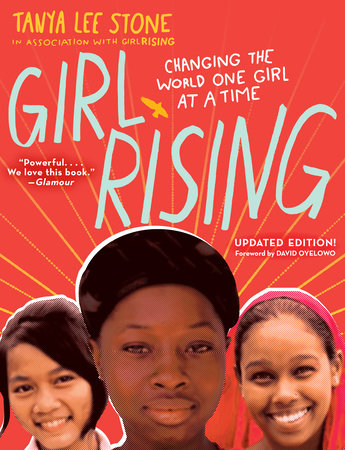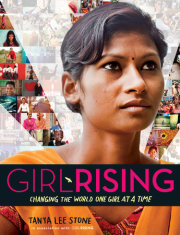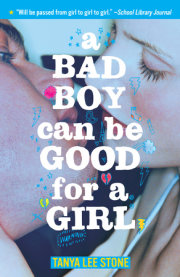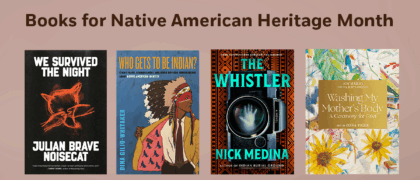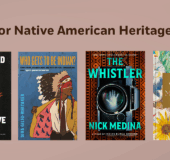It is easy to notice only our own place in the world—what’s right in front of us, and around us, and has been since the second we became conscious beings. When we are babies, our limited view of the world focuses on the people in our immediate family. Soon we notice our home, our neighborhood, our town. As we grow, we begin to see a wider picture of the world and the people with whom we share it. After all, there are more than seven billion other people on earth.
What happens to all those other people affects what happens to us, whether or not we know it, or choose to pay attention. Money, war, natural disasters, literacy, education—these are all factors that have wide-sweeping influences that connect us to each other, whether we live in a small town in Iowa or a village in Sierra Leone or a city in Thailand. What happens to our fellow citizens on earth shapes all of us.
This may sound simple, but it’s an important place to start when we think about the ways in which the world could change to make it a more balanced, more humane, more functional place. When it comes to education, one fact affects us all: worldwide, over 62 million girls are not in school. Why is this, and why is it so important?
By now, you have probably heard the story of Malala Yousafzai, who spoke out publicly against the Taliban (a fundamentalist Islamic group) for destroying girls’ schools in her native Pakistan. She was just ten years old. The following year, she wrote blog posts for the British Broadcasting Corporation (BBC) about girls’ right to education. At first, she used a fake name because it was dangerous to speak out publicly. But even after her identity was revealed, she continued her work and was acknowledged for it, winning Pakistan’s National Youth Peace Prize in 2011.
Her bold actions put her life at risk. In October 2012, when she was fifteen, a young Taliban man boarded her school bus and shot her point-blank in the head. Somehow Malala survived that gunshot. She continued to speak out, undaunted. In 2014, Malala became the youngest person to win a Nobel Peace Prize.
As phenomenal as Malala is, she would likely be the first to agree that she is not alone on her mission. Around the globe, girls are fighting for a better life: escaping forced labor, refusing to be married too young, sacrificing their safety to change long-held traditions. They are fighting to become educated and make the world a better place in the process. As former British prime minister Gordon Brown wrote, “There are a million young Malalas.”
You may think you have nothing in common with many of these girls—that they lead lives that are completely different from yours, that they are “other” kinds of girls who live in “other” kinds of places. That is not true.
Girls are girls, no matter where they live. These are girls with sisters, brothers, cousins, aunts, uncles, mothers, fathers. Girls with best friends, sharing secrets. Girls playing their favorite music, swimming, jumping, playing, dreaming, working.
One thing about their lives is dramatically different, though: the opportunity to go to school and get an education is not something they can count on. It is something they must fight for.
Most young people in developed nations (nations with a high level of industry and standard of living—for example, Great Britain, America, and most of Europe)— get up in the morning and head to school without a second thought, because free public education is available to all. But in more than fifty countries, school is not free, and often, students and their families cannot pay.
We look at numbers and facts all the time without necessarily understanding how significant they are. But this number—the 62 million girls who are not in school—profoundly affects how our whole world functions.
Why? Because educating girls literally changes how nations behave. Educating girls changes how governments function. It changes economies and jobs. It changes the shape of health care. It changes how families are raised. It can change entire cultures.
How can sending a girl to school do all these things? Fifty percent of the world’s population is female. If half of the seven billion people on the planet were educated, and thus able to be employed and more likely to be in better health, they would make the world better for all of us. Many leaders understand this. In January 2015, India’s prime minister, Narendra Modi, launched his Beti Bachao Beti Padhao (Save the Daughter, Teach the Daughter) campaign. On a visit to India a few days later, U.S. president Barack Obama said, “When a girl goes to school, it doesn’t just open up her young mind, it benefits all of us. . . . Maybe someday she’ll start her own business, or invent a new technology or cure a disease. And when women are able to work, families are healthier, communities are wealthier, and entire countries are more prosperous. . . . If nations really want to succeed in today’s global economy, they can’t simply ignore the talents of half their people.”
When you invest in a girl, it affects not only her, but also her children, and her children’s children. Let’s call this the ripple effect. When household income is in the hands of a woman, she is far more likely to invest in her family and local community than a man is. This significantly boosts the economy and the overall health of a nation.
The stories you will read here are about girls who have been able to escape their circumstances and go to school. Their stories represent hope for the potential of millions of others. The stakes are high. There are many risk factors that can doom a girl to a life of poverty and struggle. Education is the key to skipping over those pitfalls.
Copyright © 2017 by Tanya Lee Stone, in association with Girl Rising. All rights reserved. No part of this excerpt may be reproduced or reprinted without permission in writing from the publisher.

